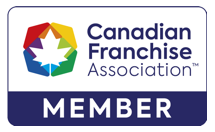In our last blog post on Canada’s Anti-Spam Law (“CASL”), we provided an overview of CASL’s consent-based regime. CASL prohibits the sending of commercial electronic messages unless the recipient has consented to receive them. Consent can be either express or implied. For many businesses, obtaining the express consent of recipients will be safest way to ensure compliance with CASL. But how should express consent be obtained?
CASL sets out several requirements in order for an express consent to be valid.
A person or business who seeks to receive someone’s express consent to receive a commercial electronic message must clearly set out for that person the purpose or purposes for which the consent is being sought and prescribed information about the identity of the person seeking consent, including the name under which they do business and contact information.
For example, a person or business seeking express consent can present the person with a tick-box, which, if ticked, signifies the person’s consent to receive CEMs from the person.
A business that uses e-mail lists should make plans to become compliant with CASL’s consent regime prior to July 1, 2014 by ensuring that it receives express consent from every address on its lists. The business should also implement procedures to obtain express consent from every new address it adds to its lists.

 2 St Clair Ave West
2 St Clair Ave West


